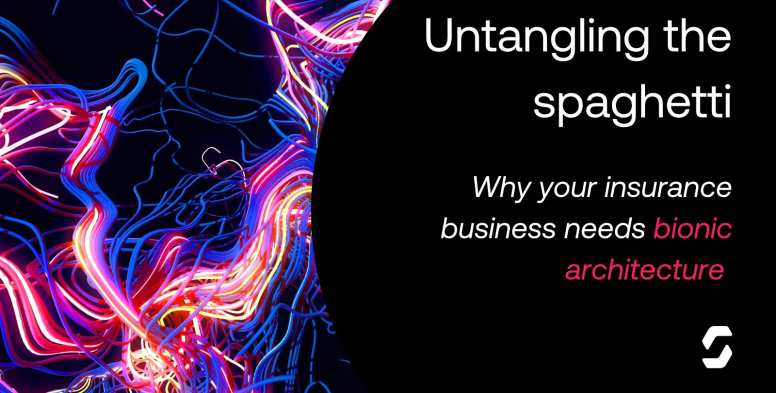
Insurance must become more resilient and responsive.
A number of challenges have buffeted the market over the last year, from war to natural catastrophes, inflation to cyber activity, not to mention hardening rates across many lines. Digital transformation in several business areas could provide the much-needed boost carriers need to ride out the storm and remain healthy and profitable.
We’re seeing fantastic pockets of innovation across many businesses; aspirational transformation projects that aim to improve underwriting, claims and operational processes. Though valuable, the overlap and integration of various digital initiatives across multiple departments can leave businesses with something that resembles a bowl of spaghetti, with entanglements and loose ends that don’t quite bind together.
Individually, these projects will drive huge benefits to businesses, but imagine if those pockets of great innovation could be seamlessly combined, working together to bring unforeseen benefits to the whole business, rather than just individual departments.
Untangling the spaghetti
We believe bionic architecture is the answer. Bionic architecture is all about considering how you plumb these individual bionic capabilities together to create a holistic transformation journey and realise a force multiplier of unseen benefits. It’s about thinking beyond those pockets of innovation and bringing the learnings and benefits of these projects out of their siloes and to the whole business. A bionic architecture is taking the sum of all of these parts and developing a better understanding of how the company will look as a fully-fledged digital organisation.
For example, carriers can use technology to give their underwriters bionic capabilities. By bionic, we mean accelerating the parts of the underwriting process that make the most difference, honing-in on the areas that deliver the best benefit and augmenting them.
Bionic capabilities can help underwriters to augment the underwriting process to ingest and collate data more seamlessly and use that data to write better risks. But imagine if that collated data could be seamlessly integrated with other areas of the business, claims or fraud for instance, to offer an altogether more robust view of risk and drive efficiencies right across the business.
The secret sauce
Bionic architecture is the secret sauce that brings together the ingredients of digital transformation and helps businesses gain a cohesive view of their estate. Without considering bionic architecture from the start, businesses risk building themselves into a corner, with disparate pieces of technology that don’t work together as a whole. They are essentially building themselves a new legacy system that they could be tied to for years to come, and, as the market moves on, they will find themselves stuck in a trap of their own making.
It’s not too late. Businesses are at different stages of their transformational journey. Those larger enterprise organisations will undoubtedly have a tougher road ahead, with embedded processes and systems to navigate, but it is possible. Though overwhelming, considering the application of bionic architecture now can save businesses the cost and resources of multi-year, multi-million dollar rip and replace projects when legacy systems eventually fail to keep pace with change in the market. New digital-first entrants will have an easier time adopting a bionic mindset, many are built from the ground up with sophisticated integration capabilities already at the forefront of their business, but they must think about their digital architecture ahead of new developments to ensure that they can maximise their own competitive advantage.
As businesses consider their digital priorities, they need to understand how they can develop a bionic architecture suitable for the changes they needed to make today, and in the future.
Contact us to find out how you can take the first steps to implementing a bionic architecture for underwriters that’s future ready.
Author: Ben Huckel, co-founder and COO, Send. You can connect with Ben on LinkedIn or email: ben.huckel@send.test.betterbrandagency.com.